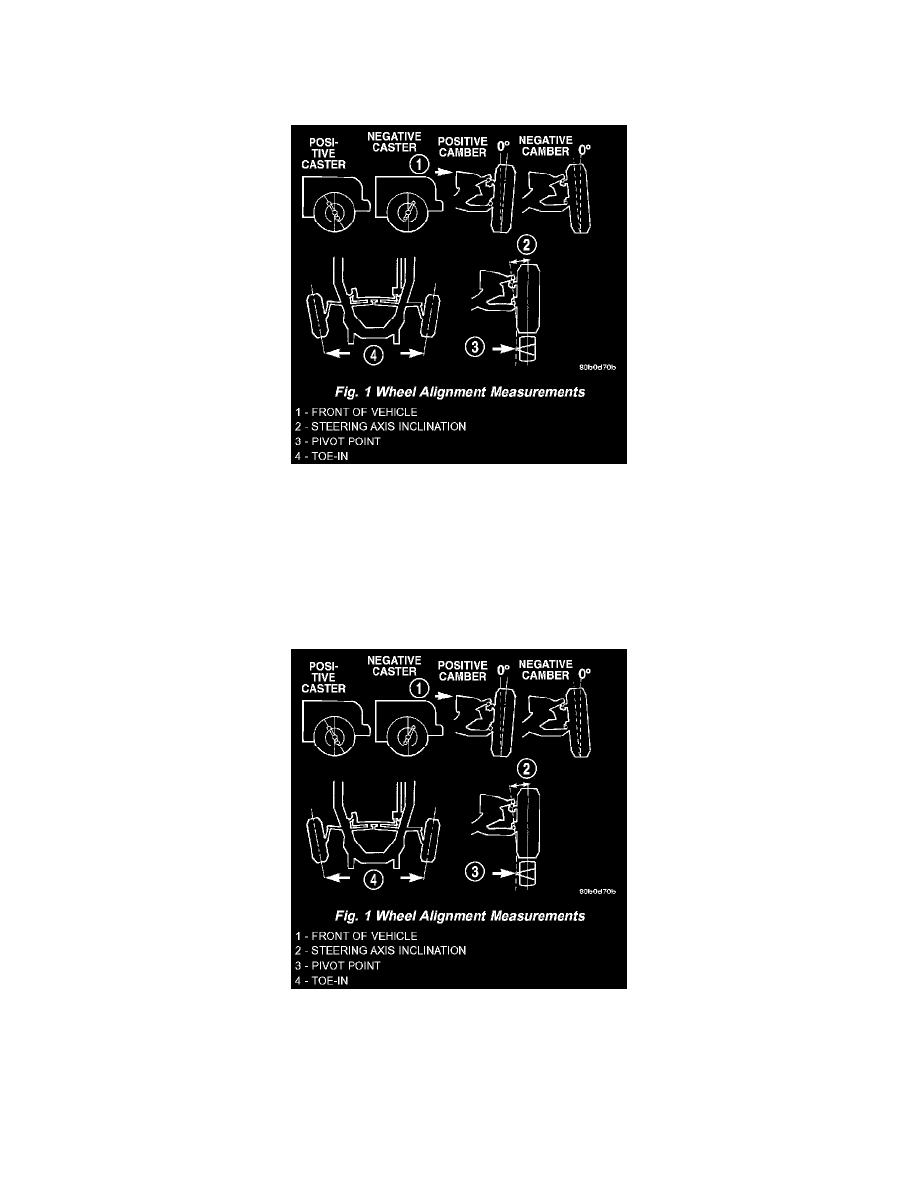Dakota Quad Cab 2WD V8-5.9L VIN Z LDC (2002)

Alignment: Description and Operation
WHEEL ALIGNMENT
DESCRIPTION
Wheel alignment involves the correct positioning of the wheels in relation to the vehicle. The positioning is accomplished through suspension and
steering linkage adjustments. An alignment is considered essential for efficient steering, good directional stability and to minimize tire wear. The most
important measurements of an alignment are caster, camber and toe.
CAUTION: Never attempt to modify suspension or steering components by heating or bending.
NOTE: Periodic lubrication of the front suspension/steering system components may be required. Rubber bushings must never be lubricated.
OPERATION
CASTER is the forward or rearward tilt of the steering knuckle from vertical. Tilting the top of the knuckle forward provides negative caster. Tilting
the top of the knuckle rearward provides positive caster. Positive caster promotes directional stability. This angle enables the front wheels to return to
a straight ahead position after turns.
CAMBER is the inward or outward tilt of the wheel relative to the center of the vehicle. Tilting the top of the wheel inward provides negative camber.
Tilting the top of the wheel outward provides positive camber. Incorrect camber will cause wear on the inside or outside edge of the tire.
TOE is the difference between the leading inside edges and trailing inside edges of the front tires. Wheel toe position out of specification cause's
